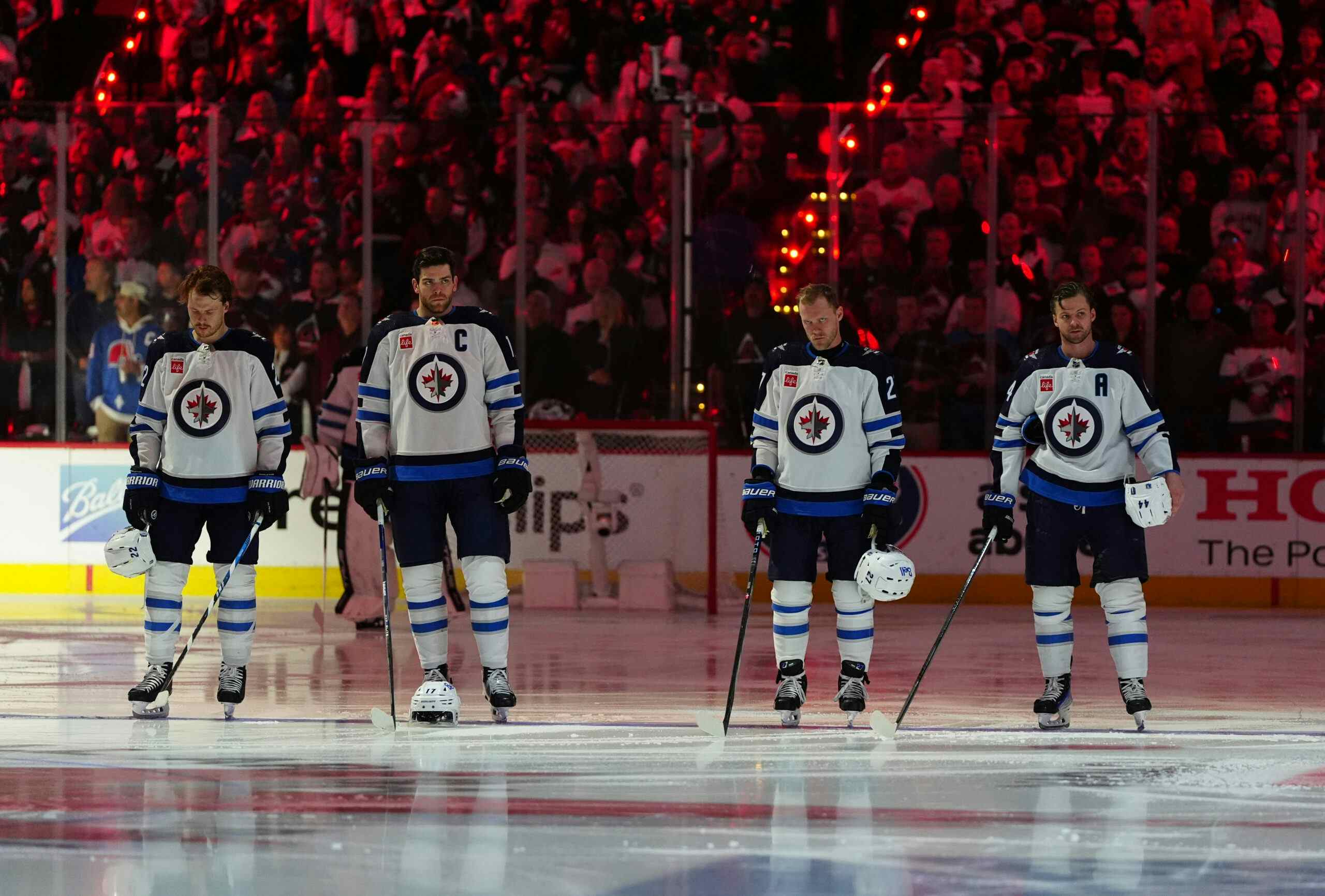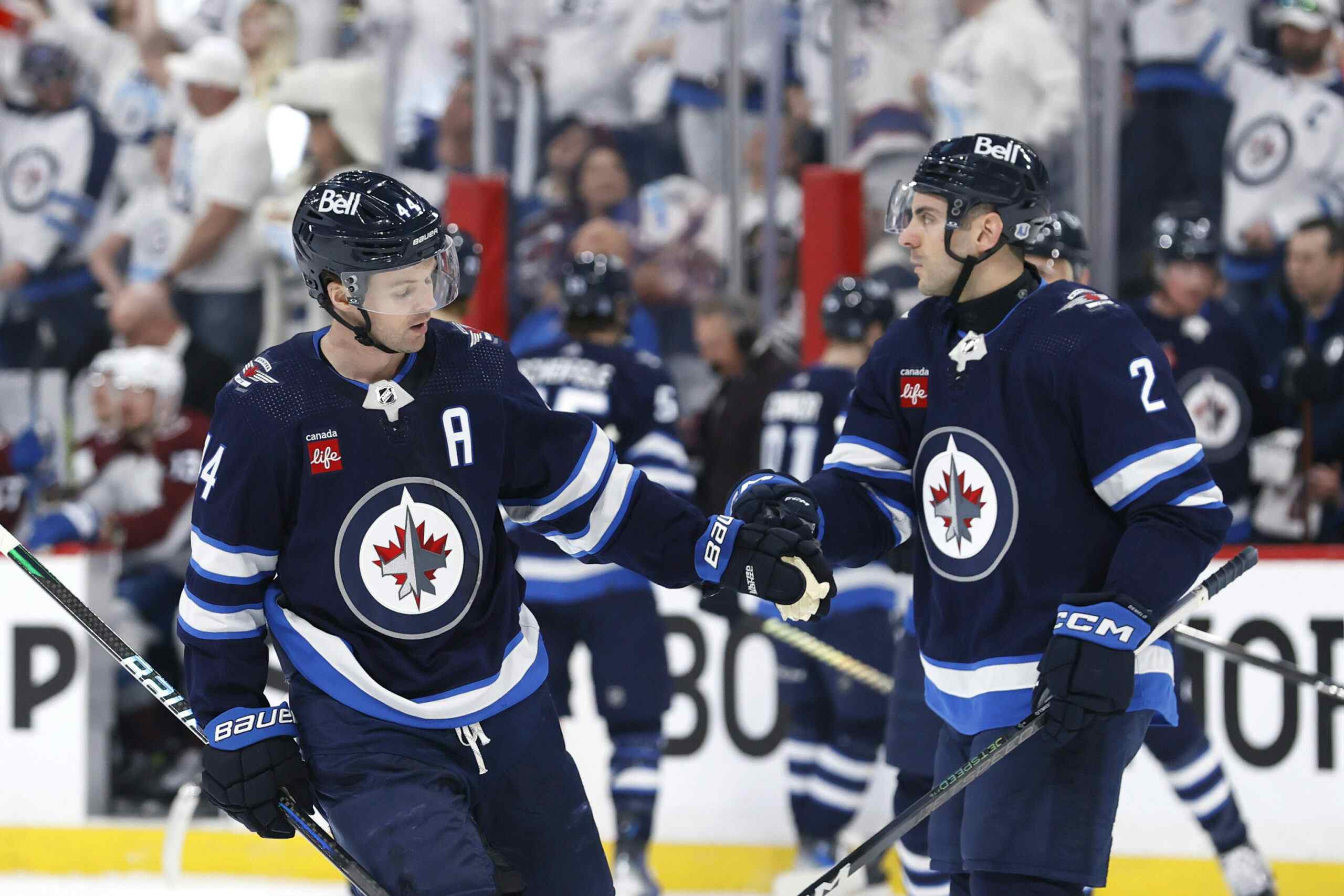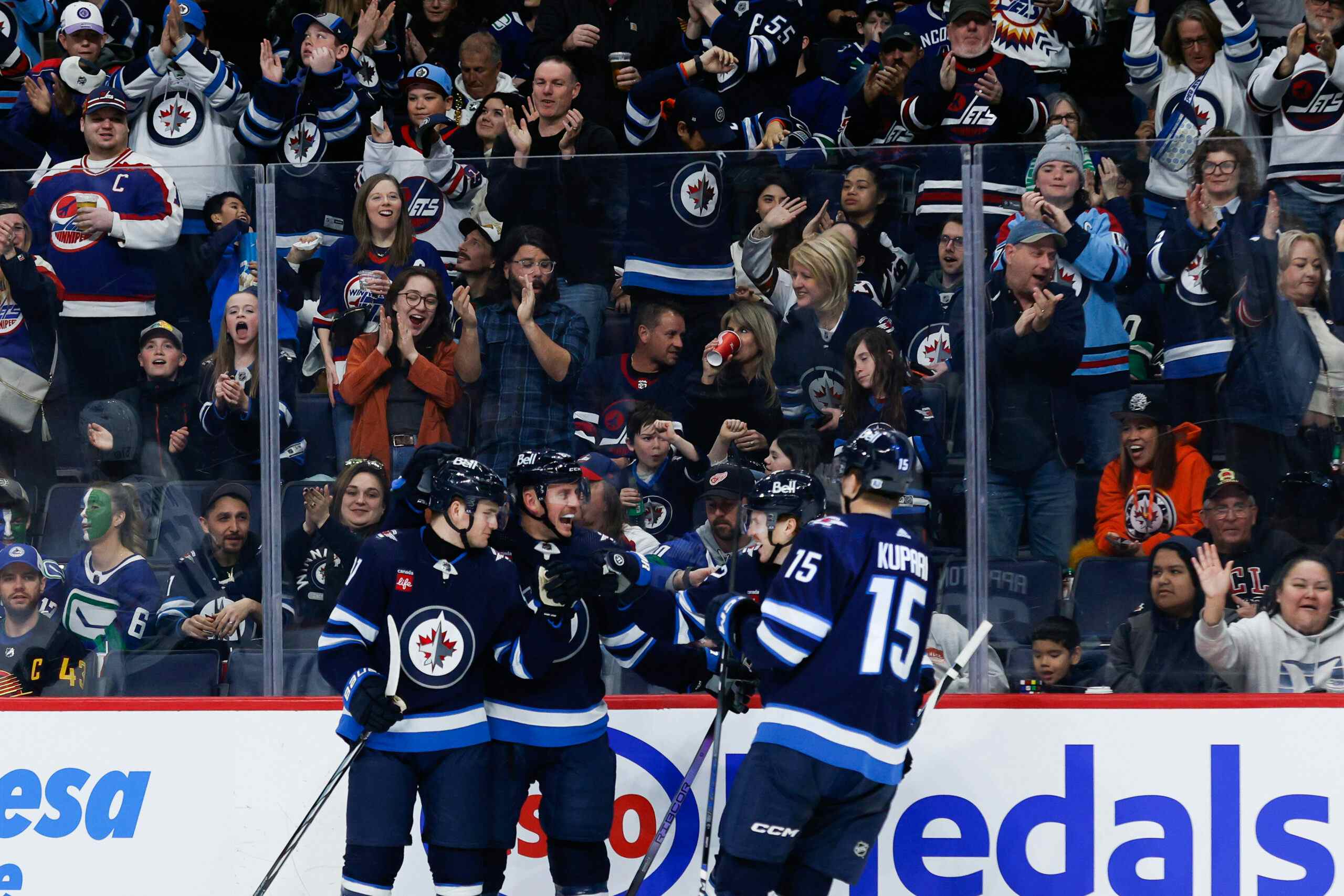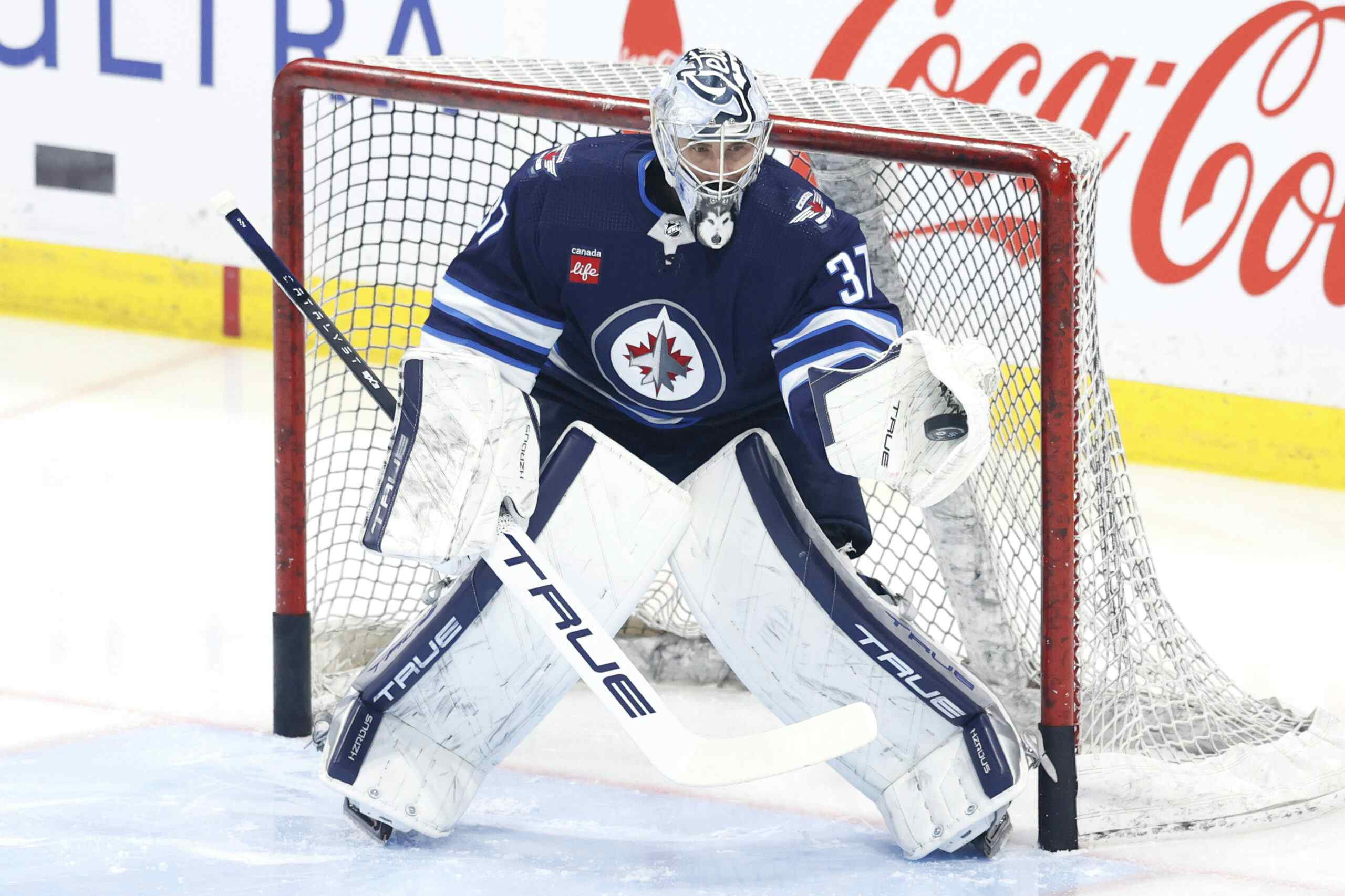Because It’s The Cap: Winnipeg Jets Offseason Preview
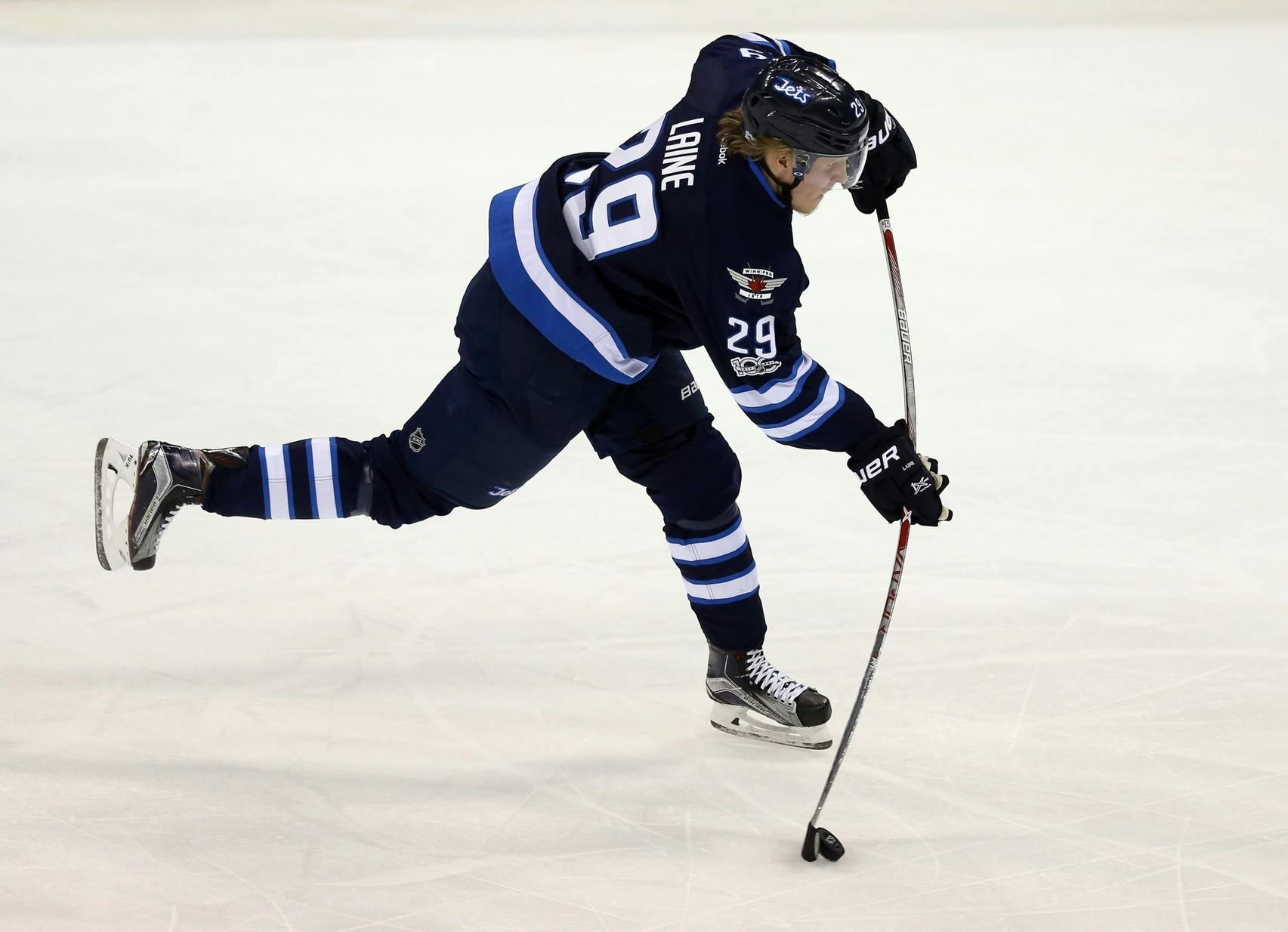
By Megan Kim
6 years agoLet’s get this out of the way right off the bat: The Winnipeg Jets were (and are) a better team than their 2016-17 record indicated. Unfortunately for them, you don’t make the playoffs by being better than your record indicates. You make the playoffs by… posting a good enough record. And the Jets? They did not do that.
It wasn’t all doom and gloom for the Jets, though. There were plenty of bright spots in an underwhelming season, and we all know what the brightest spot of all was.
By the grace of the hockey gods, Winnipeg ended up with the second overall pick in the 2016 Entry Draft, and voila — a Patrik Laine, goal-scorer extraordinaire, at their disposal. That went better than anybody could have hoped, and if the season didn’t go exactly as planned, at least the Jets can tally up a Calder Trophy finalist to their name. The bottom line? Barring a Laine sophomore slump and factoring in the rest of the talent on the roster, Winnipeg fans can look forward to the future with hope in their hearts.
Roster Analysis
After exactly zero Canadian teams qualifying for the playoffs last season, I was pretty optimistic about several of those teams turning it around. Winnipeg was one of the ones I felt good about, which just goes to show how much I know. Of course, the Jets were devastated by injuries this season.
In fact, as per NHL Injury Viz, the Jets trailed only the Tampa Bay Lightning in meaningful man games lost — as in, games missed by active forwards, defencemen, or goalies. Now, missing Bryan Little for a while isn’t quite the same as losing, say, Steven Stamkos for an entire season, but the injuries piled up for the Jets throughout the year. It felt like every time someone got back on the ice, another player would go down.

As you can see above, Winnipeg iced a fully-healthy optimal lineup just once this season (in Game 1 of 82). That’ll take a toll on your place in the standings.
It’s a shame, too. This is a really fun forward group, and Dustin Byfuglien always keeps things interesting.
Patrik Laine was undoubtedly the highlight of the season. Let’s not fool ourselves: All due respect to Laine and fellow finalist Zach Werenski, but Auston Matthews is going to walk away with the Calder. That doesn’t mean anybody should be disappointed with what Laine accomplished in his rookie campaign.
Laine was simply electric. His season was marred slightly by a brief absence from the lineup due to a concussion, and his offense petered off a bit late, but all in all, Patrik Laine came as advertised. He supplied highlight-reel goal after highlight-reel goal this season, finishing with 36 on the season. Along the way, he collected a hat trick of hat tricks, proved that he could dish a puck as well as shoot it by registering 28 assists, and gave us some of the best goal cellies of the year.
In short, Patrik Laine gave non-Jets fans a reason to watch the Jets. And once those non-Jets fans took in a few games, they probably realized that there were a few other reasons to watch the team, too. (Not that I’m speaking from experience or anything.)
Nikolaj Ehlers has always been dynamic, but last season –just his second in the NHL– he really took a step forward in becoming the player we all thought he could be.
His speed (seriously, watch him embarrass the Ducks in that clip) was something to behold all year, and while he finished with a perfectly impressive 25 goals and 39 assists on the season, it’s probably not preposterous to assume that he’ll do even better next season.
As if Laine and Ehlers weren’t appealing enough on their own as Winnipeg’s young guns, Mark Scheifele also exists. Scheifele had himself something of a coming out party this season, posting 32 goals and 50 assists — good enough for seventh in overall league scoring.
The Jets are worth watching for that trio alone, but they also boast the perennially underrated and under-appreciated Blake Wheeler. The Jets captain put together another very good season, trailing only Scheifele in team scoring.
Winnipeg isn’t too badly off in terms of secondary scoring, either. Bryan Little and Mathieu Perreault both had some injury trouble, but performed reasonably well. Joel Armia’s not a game-breaker, but his speed was definitely an asset to the Jets’ forward corps. And Marko Dano had awful luck with injuries, but you get the feeling that there’s plenty of potential there if he can stay healthy.
As far as team defense goes… That outlook is perhaps a little less bright. Dustin Byfuglien was his usual self. His point production was right where it should be, although his goals were down a little. That’s more or less the only thing that went right for the Jets’ blue line.
Tyler Myers spent the large majority of the season injured — he played just 11 games. Jacob Trouba, underrated and under-appreciated much like his captain, tried to outlast Kevin Cheveldayoff in a game of “New Contract Chicken” and predictably came out of that with the short end of the stick. (Can’t wait for our next lockout, folks!) Thanks to that holdout, Trouba missed the first few months of the season and took a little bit to get going, although he did eventually hit his stride.
As for goaltending…
Well. I’d like to give a shoutout to up-and-comer Eric Comrie, who had himself a nice little season with the Manitoba Moose.
In all seriousness, the Jets’ goaltending situation was a little tenuous this year. They did finally pull the trigger on putting Connor Hellebuyck into a starting role at Ondrej Pavelec’s expense. At times, Hellebuyck looked like he had this whole NHL goaltending thing under control. At times, it looked like he had only ever seen a hockey game on television. Luckily, the former was more frequent than the latter, and if Hellebuyck wasn’t quite ready to be the Jets’ starter, he was at least pretty close to it.
Conclusion: Call me a bright-eyed optimist, but I think the Jets will be okay going forward, especially if Hellebuyck pans out as a bona fide starting goalie. And if not, there’s always Comrie waiting in the wings. This is a really nice forward group (Ehlers and Laine and Scheifele have my heart going pitter-patter), and even if the blue line isn’t quite up to snuff, Byfuglien should still be Byfuglien for a bit longer. Trouba is genuinely one of the best young defencemen in the league, and while Myers and Toby Enstrom are overpaid, they’re still solid players. Now, I’m not going to start a #TheJetsAreActuallyGood hashtag, but maybe a #TheJetsAreNotActuallyBad one would do.
Cap Situation

Kevin Cheveldayoff, also known as the most patient general manager in the league, has a pretty nice situation going on, at least for this next season.
The Jets’ highest paid forward as of now is Mark Scheifele. His cap hit comes in at $6.125 million and he’s signed through 2024, and he’s worth every cent of that. After that, it’s Blake Wheeler, who’s on a very good contract ($5.6 million AAV) for the next two seasons. The next two highest-paid forwards are Bryan Little and Mathieu Perreault, who serve as perfectly adequate secondary scoring but are probably slightly overpaid.
Their highest-paid defenceman is Dustin Byfuglien, coming in at a $7.6 million AAV for four more years including this upcoming season. That’s a less attractive contract than the Scheifele one, especially since Byfuglien turns 32 this season. However, he’s hanging in there for now, and we haven’t seen any signs of a significant decline.
Having over $11 million wrapped up in Toby Enstrom and Tyler Myers is really not ideal. On the bright side, Enstrom’s contract ends after this season and Myers’ contract ends the following one. This is a good thing, because Ehlers and Trouba are both RFAs next summer. Trouba, who took a bridge deal for far less than he’s worth, will especially be looking for a fat paycheck. Luckily, that’s next summer’s problem.
Oh, and maybe of note: gritty veteran leader Chris Thorburn is a UFA. Jets fans should not cry over losing him, although it wouldn’t surprise me if Cheveldayoff re-signs him.
Conclusion: The Jets have enough cap flexibility to rest easy, at least for another season. In fact, Cheveldayoff has the ability to make any number of trades — but that doesn’t mean he’ll make them.
Offseason Game Plan
Cheveldayoff does have a few RFAs this year, but he has plenty of cap space to take care of those if he so wishes. Hellebuyck is the key RFA there, and that will certainly get done. There should be plenty of money left over to re-sign the remaining RFAs if the Jets decide to do so.
As for the upcoming expansion draft, Cheveldayoff is in a good position here, too. They say good things come to those who wait, and apparently that holds true for him.
The Jets are only obligated to protect Byfuglien and Enstrom. Byfuglien would have been protected anyway, and while Enstrom’s contract would be nice to get off the books, there’s just a year left on it. Trouba should be the third defenceman protected, and a re-signed Hellebuyck will the protected goalie.
Laine and Ehlers are exempt from the draft, as is promising prospect Kyle Connor. Cheveldayoff will definitely protect Scheifele and Wheeler. Provided he goes the seven forwards and three defencemen protection route, that leaves him five spots. I’m willing to bet Little and Perreault get protected, and if Marko Dano gets re-signed, he will too. The point is, though, Cheveldayoff has a lot of wiggle room thanks to his savvy unwillingness to hand out no-move clauses.
Conclusion: Winnipeg has it pretty good right now, all things considered, and the cautious Cheveldayoff probably isn’t going to make any sort of splash this summer. That’s not his style. This offseason will be easy to maneuver, especially in light of the gymnastics some teams are going to have to accomplish (I’m not saying Stan Bowman has work to do, but Stan Bowman has work to do) to end up with a viable roster.
PREVIOUSLY IN THIS SERIES…
Recent articles from Megan Kim

